17 UMMA Objects
17 UMMA Objects

Utagawa Yoshitora
Gentleman at a Courtesan's House by the Bay
1855 – 1870
Gift of Pearl Sellards
1985/1.179
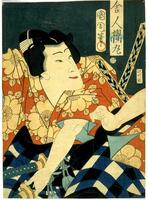
Toyohara Kunichika (Japanese (culture or style))
Unidentified actor in the role of Sakuramaru, from the kabuki play 'Sugwara denjû tenarai kagami'; 1/3 of triptych with 1985/1.173)
1867 – 1899
Gift of Pearl Sellards
1985/1.172
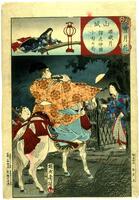
Toyohara Chikanobu (Japanese (culture or style))
Setsugekka [Snow, Moon and Flowers]: Yamashiro, Moon over Saga
1867 – 1932
Gift of Pearl Sellards
1985/1.177
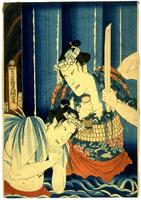
Utagawa Kunisada (Japanese (culture or style))
Praying for Hits in the Waterfall of Answered Prayers: Nakamura Shikan IV and Bandō Mitsugorō VI
1863
Gift of Pearl Sellards
1985/1.171A
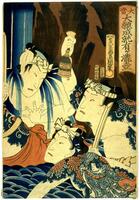
Utagawa Kunisada (Japanese (culture or style))
Praying for Hits in the Waterfall of Answered Prayers: Ichimura Uzaemon XIII, Sawamura Tanosuke III, and Sawamura Tosshō II
1863
Gift of Pearl Sellards
1985/1.171C
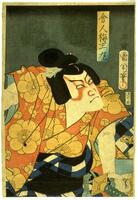
Toyohara Kunichika (Japanese (culture or style))
Unidentified actor in the role of Umeômaru, from the kabuki play 'Sugwara denjû tenarai kagami'; 1/3 of triptych with 1985/1.172)
1867 – 1899
Gift of Pearl Sellards
1985/1.173

Utagawa Kunisada (Japanese (culture or style))
Praying for Hits in the Waterfall of Answered Prayers: Kawarazaki Gonjūrō I and Bandō Hikosaburō V
1863
Gift of Pearl Sellards
1985/1.171B

Utagawa Yoshitora
Shuten Dôji; 1/3 of triptych; see 1985/1.178B
1835 – 1880
Gift of Pearl Sellards
1985/1.178A

Utagawa Yoshitora
Shuten Dôji; 1/3 of triptych; see also 1985/178A
1835 – 1880
Gift of Pearl Sellards
1985/1.178B
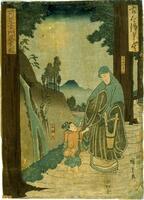
Utagawa Hiroshige (Japanese (culture or style))
Kokon Jôruri zukushi series: 'Ishidômaru' (Kûkai as a child)
1835 – 1845
Gift of Pearl Sellards
1985/1.180
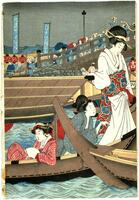
Kitagawa Utamaro (Japanese (culture or style))
River-Opening Ceremony at Ryôgoku in Bunka Era Edo
1889
Gift of Pearl Sellards
1985/1.181B
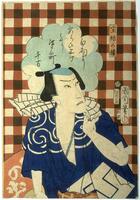
Toyohara Kunichika (Japanese (culture or style))
Lineup of Five Great Kabuki Actors: Kawarazaki Gonjūrō I as Gon of the Treasure Knot
1867
Gift of Pearl Sellards
1985/1.174
Loading…
